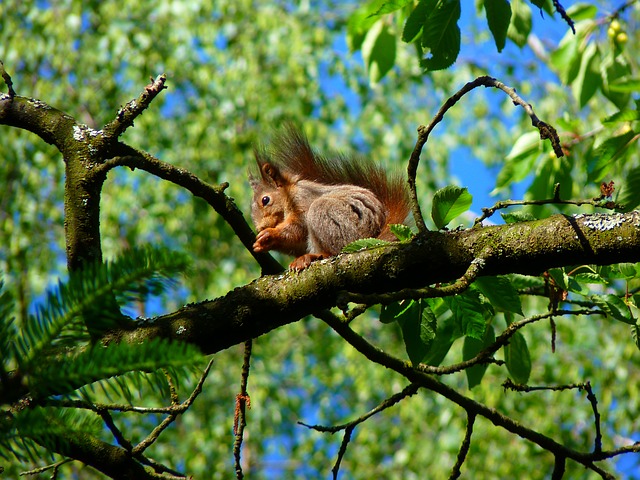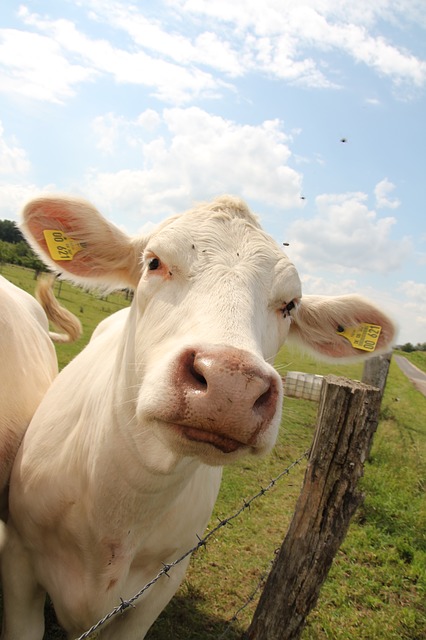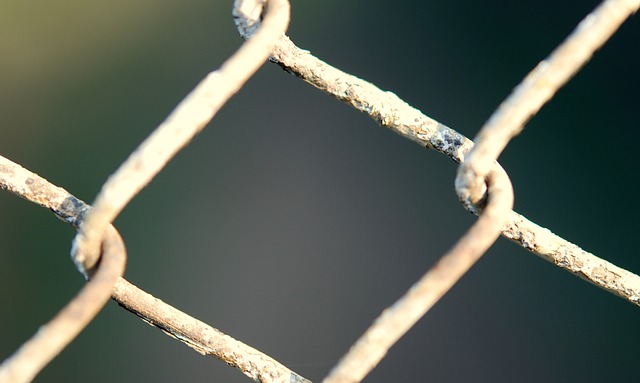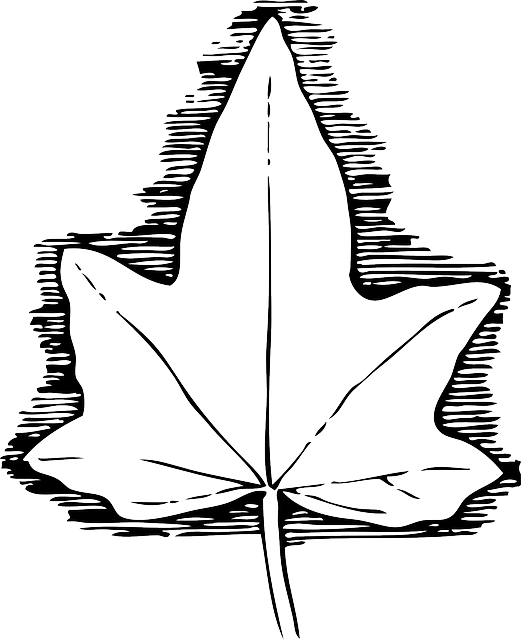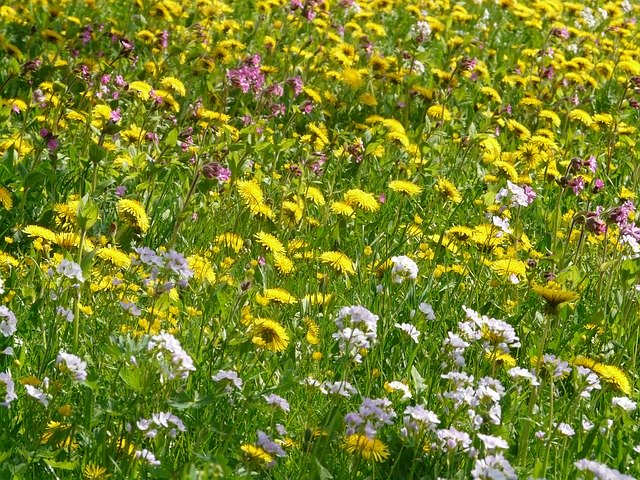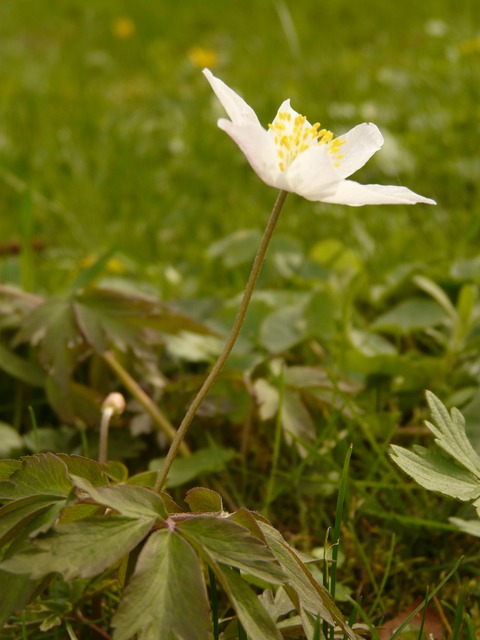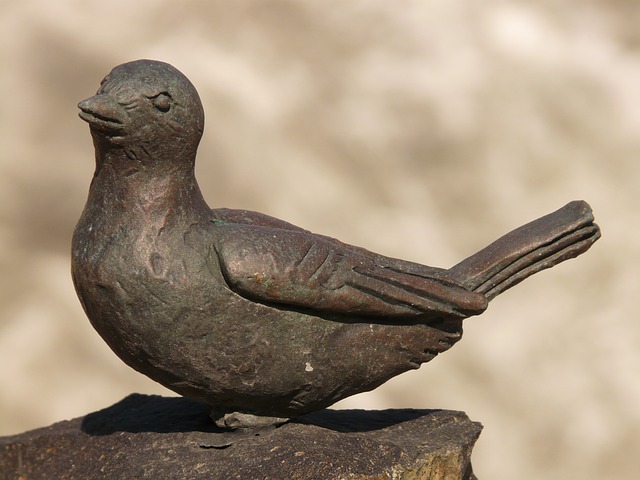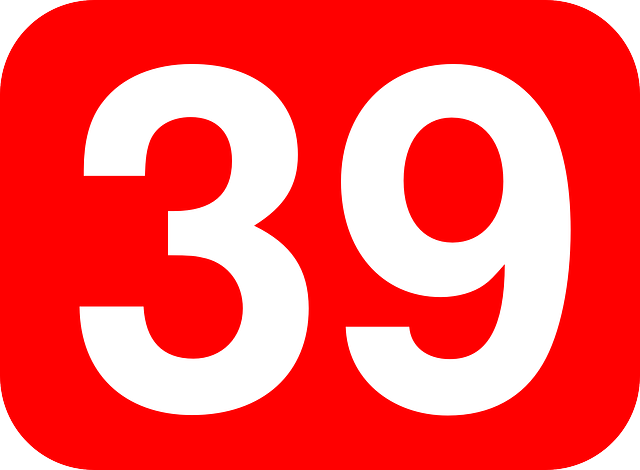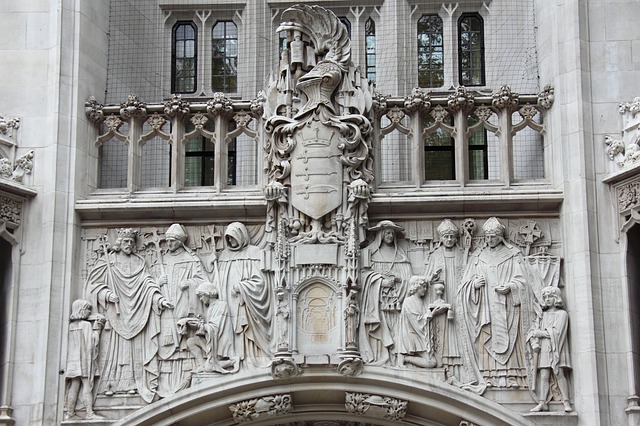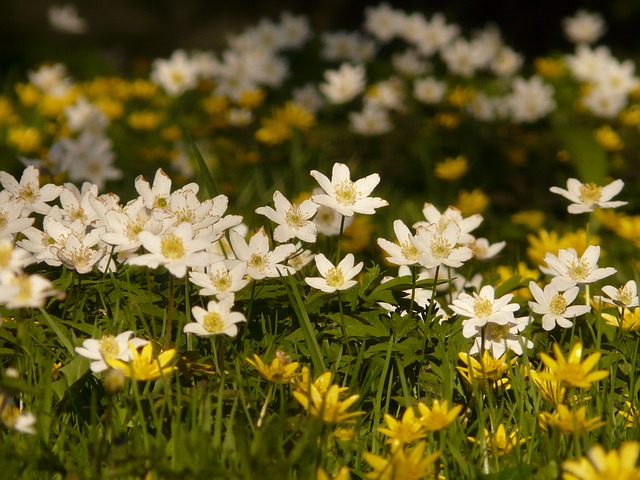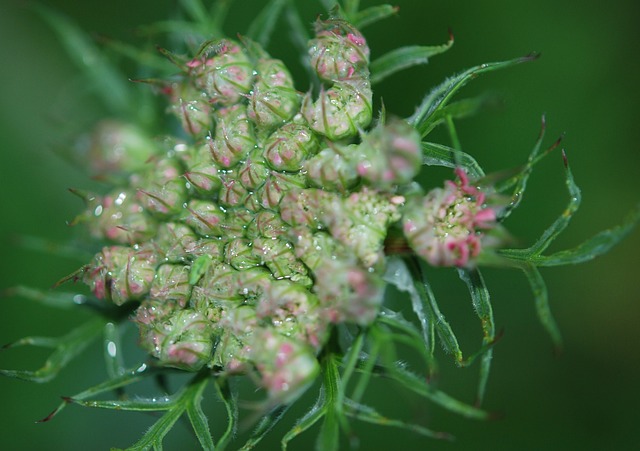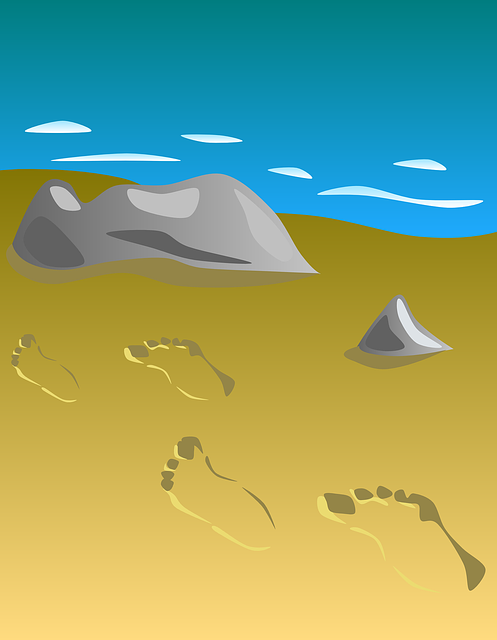نرتڤا
| نرتڤا | |
|---|---|
|
وادي النرتڤا السفلى - مصوَّرا من خلف أسوار Počitelj، ناظرين شمالاً وأعلى النهر باتجاه قرية Počitelj وقلعتها، وأبعد وراء موستار.
| |
|
مفيض نرتڤا+تربيشنيتسا (في البوسنة والهرسك مميزاً بالأحمر والأخضر)
| |
دلتا النرتڤا
| |
| أصل الاسم | من أصل إليري، من القاعدة الهندو-أوروپية *ner-, *nor- "يغطس، ينغمس" |
| الاسم المحلي | Neretva |
| المسقط | |
| البلدان | البوسنة والهرسك، كرواتيا |
| البلدات | Ulog, Glavatičevo، كونييتس، يابلانيتسا، موستار، Počitelj, Čapljina, متكوڤتش، Opuzen, پلوتشى |
| السمات الطبيعية | |
| المنبع | |
| ⁃ المسقط | جبال لبرشنيك وزلنگورا، الألپ الدينارية، البوسنة والهرسك |
| ⁃ الإحداثيات | |
| ⁃ المنسوب | 1,227 متر |
| المصب | البحر الأدرياتي |
- المسقط |
پلوتشى، كرواتيا |
- الإحداثيات |
Coordinates: |
- المنسوب |
0 متر |
| الطول | 225 كم |
| مساحة الحوض | 11,798 كم² |
| التدفق | |
| ⁃ المتوسط | 341 م³/ث |
| سمات الحوض | |
| السريان | نرتڤا← البحر الأدرياتي |
| النظام النهري | الأدرياتي |
| الروافد | |
| - اليسرى | موستارسكا بييلا، بونا، بريگاڤا، كروپا |
| - اليمنى | راكيتنيتسا، راما، Trebižat |
| المسطحات المائية | Uloško Lake, Boračko jezero, Blatačko Lake, بحيرة يابلانيچكو, Ramsko Lake, Salakovačko Lake, Grabovičko Lake, بحيرة موستارسكو، هوتڤوبلاتو، ڤروتاك، دلتا النرتڤا |
| الجسور | ستارا كوپريا، ستاري موست |
| الموانئ الداخلية | متكوڤتش |
النرتڤا (Neretva ؛ تـُنطق [něreːtʋa]؛ سيريلية صربية: Неретва)، ويُعهد أيضاً بإسم نارِنتا Narenta، هوأحد أكبر الأنهار في الجزء الشرقي من حوض الأدرياتي. وتوجد عليه أربع محطات توليد طاقة كهرمائية بسدود كبيرة (أعلى من 15 متر) تؤمِّن حماية من الفيضان، كهرباء وتخزين للمياه. ويُعهد ببيئته الطبيعية وتنوع بسيطته.
عانت الأنظمة البيئية للمياه العذبة من تزايد السكان وضغوط التنمية المرافقة لذلك. أحد أثمن المصادر الطبيعية في البوسنة والهرسك وكرواتيا هي مصادرها من المياه العذبة، المتمثلة في عيون وفيرة وأنهار صافية. ولوقوعه بين أنهار إقليمية رئيسية: نهر درينا إلى الشرق، ونهر أونا إلى الغرب ونهر ساڤا، يضم حوض النرتڤا أبرز مصدرلماء الشرب.
يتميز النرتڤا بين أنهار منطقة الألپ الدينارية، خصوصاً فيما يتعلق بأنظمته البيئية وموائله المتنوعة، والنبيت والوحيش وتراثه الثقافي والتاريخي.
اسم النهر يُعتقد أنه ينحدر من الجذر الهندو-أوروپي *ner، الذي يعني "يغطس". نفس الجذر يوجد في الجذر الصربو-كرواتي "roniti".
الجغرافيا والهيدرولوجيا
يجري النرتڤا عبر البوسنة والهرسك حتى يبلغ البحر الأدرياتي. وهوأكبر نهر كارستي في الألپ الدينارية في الجزء الشرقي من حوض/مجمع الأدرياتي. وإجمالي طوله هو230 كم، منهم 208 كم في البوسنة والهرسك، بينما الـ 22 كيلومتر الأخيرة تقع في مقاطعة دوبروڤنيك-نرتڤا في كرواتيا.
حوض تصريف النرتڤا تبلغ مساحته 11,798 كم²؛ في البوسنة والهرسك 11,368 كم² بإضافة حوض تصريف نهر تربيشنيتسا ، وفي كرواتيا 430 كم². متوسط تدفق النهر عند جيتوميسليكي في البوسنة والهرسك هو233 م³ وعند المصب في كرواتيا هو341 م³ بالإضافة إلى تصريف نهر تربيشنيتسا البالغ 402 م³. حوض نهر تربيشنيتسا مُدمج ضمن حوض تصريف النرتڤا بسبب الترابط الطبيعي للحوضين عبر أرض الكارست المسامية.
المتغيرات الهيدرولوجية للنرتڤا تتم مراقبتها بانتظام في كرواتيا في متكوڤتش.
القطاعات
جغرافياً وهيدرولوجياً، ينقسم النرتڤا إلى ثلاث قطاعات.
منبع النرتڤا وخانق مياهه الأولى يقع في قلب الألپ الدينارية على سفوح جبال زلنگورا ولبرشنيك، خصوصاً تحت حدوة گردلي. منبع النهر يقع على ازدياد 1,227 متر فوق سطح البحر ويتألف من خمس عيون منفصلة. وفي مساره لمدة 90 كيلومتر خلال القسم الأول، ينحت النرتڤا أخدودين عميقين وضيقين وكذلك واديين واسعين خصبين، حول أولگ ثم حول Glavatičevo, before it reaches town of Konjic. هذا القسم يشتهر أيضاً بإسم أعالي النرتڤا (بوسنية: Gornja Neretva)، وهنا ينساب النهر عموماً من الشرق-جنوب شرق إلى الشمال-شمال غرب كمعظم أنهار البوسنة والهرسك المنتمية إلى حوض تصريف الدانوب، ويغطي نحو1,390 كم² بمتوسط انحدار 1.2%. ومباشرة أسفل كونييتس، يتسع النرتڤا مرة أخرى في ثالث وأكبر وادي وهوالذي يمد السكان بأرض زراعية خصبة قبل حتى ينغمر بالخزان الاصطناعي الكبير، بحيرة يابلانيتسا، التي تشكلت بعد بناء سد يابلانيتسا بالقرب من بلدة يابلانيتسا.
.
القطاع الثاني يبدأ من إلتقاء النرتڤا مع راما بين كونيتس ويابلانيتسا حيث يلتوي النرتڤا فجأة نحو180° درجة باتجاه الشرق-الجنوب الشرقي وينساب في المسار القصير قبل حتى يبلغ بلدة يابلانيتسا. ومن تلك النقطة يلتوي مرة أخرى باتجاه الجنوب. ومن يابلانيتسا، يدخل النرتڤا ثالث وأكبر خانق في مساره، جارياً بميول جبلية حادة عند پرني، چڤرسنيتسا وچابوليا حيث يصل عمقه 800-1200 متر. وتوجد ثلاث سدود كهرمائية بين يابلانيتسا وموستار.
حين يتسع النرتڤا للمرة الثانية والأخيرة، فإنه يصل قطاعه الثالث. هذه المنطقة كثيراً ما تُسمى في الدارجة "كاليفورنيا البوسنة والهرسك". فآخر 30 كم من مجراه يشكل دلتا طميية واسعة، قبل حتى يُفرغ النهر محتواه في البحر الأدرياتي.
الروافد
أنهار تاتيناتس (ويُعهد أيضاً بإسم يزرنيتسا)، the Gornji Krupac وDonji Krupac, the Ljuta (ويُعهد أيضاً بإسم ديندولكا)، وJesenica, the Bjelimićka Rijeka, the Slatinica, the Račica, the Rakitnica, the Ljuta (Konjička), the Trešanica, the Neretvica, the Rama, Doljanka, the Drežanka, the Grabovica, the Radobolja, and the Trebižat ينساب في النرتڤا من اليمين، بينما اليزرنيتسا، وŽivanjski Potok (also known as the Živašnica), the Lađanica, the Krupac, the Bukovica, the شيشتيتسا، Bijela, the Idbar, the Glogošnica, the Mostarska Bijela, the Buna, the Bregava، والكروپا ينساب فيه من اليسار.
البلدات والقرى
Towns and villages on the Neretva include Ulog, Glavatičevo, Konjic, Čelebići, Ostrožac, Jablanica, Grabovica, Drežnica, Bijelo polje, Vrapčići, موستار، Buna village, the historical town of Blagaj, Žitomislići, the historical village of Počitelj, Tasovčići, Čapljina, and Gabela في البوسنة والهرسك؛ وMetković, Opuzen, Komin, Rogotin، وپلوتشى في كرواتيا. أكبر بلدة على النرتڤا هي موستار في البوسنة والهرسك.
أعالي النرتڤا
The upper course of the Neretva river is simply called the أعالي النرتڤا (بوسنية: Gornja Neretva). It includes numerous streams and well-springs, three major glacial lakes near the river and more lakes scattered across the mountains of Treskavica and Zelengora in the wider area, mountains, peaks and forests, flora and fauna of the area. The Upper Neretva has water of Class I purity and is almost certainly the coldest river water in the world, often as low as 7–8 degrees Celsius in the summer months.[] Rising from the base of the Zelengora and Lebršnik Mountain, Neretva headwaters run in undisturbed rapids and waterfalls, carving steep gorges reaching 600–800 مترs (2,000–2,600 قدم) in depth.
نهر راكيتنيتسا
راكيتنيتسا هورافد رئيسي للقطاع الأول (بوسنية: Gornja Neretva). يشكل نهر راكيتنيتسا أخدوداً طوله 26 كم، من إجمالي طوله البالغ 32 كم، that stretches between Bjelašnica and Visočica to the southeast from Sarajevo. From the canyon, a hiking trail along the ridge of the Rakitnica canyon drops 800 m below, to the famous village of Lukomir. The village is the only remaining traditional semi-nomadic Bosniak mountain village in Bosnia and Herzegovina. At almost 1,500 m, Lukomir features stone homes with cherry-wood roof tiles. It is the country's highest and most isolated mountain village. The village is inaccessible from the first snows in December until late April and sometimes even later, except by skis or on foot.
النرتڤا الأوسط
Hydrographically the Middle Neretva section begins from town of Konjic, but after the construction of Jablanica Hydroelectric Power Station and flooding of large fertile valley between Konjic and Jablanica, known simply as "Neretva" since Middle Ages, the new point for hydrographical division became dam of the Jablanica HPP where also is a place of confluence of the rivers Neretva and Rama. Here the Neretva river suddenly takes almost 180° degrees turn toward east-southeast and flows the short leg before it reach town of Jablanica. From this point it turns again toward south and enters third and the largest canyon on its course, running through the steep slopes of the mountains of Prenj, Čvrsnica and Čabulja, reaching between 800–1,200 مترs (2,625–3,937 قدم) in depth. This section is characterized with steep and relatively narrow canyon, and rugged karstic geology and hydrology. Four enormous vales-size rifts appear in the mountainsides forming canyon walls, two from each sides of the river, intersecting with the main canyon almost perpendicularly. The Neretva receives only four small streams in this section, all running through these side-vales, which are relatively short. Going downstream from Jablanica, first two from each side are the Glogošnica stream, its eponymous canyon and small village, at the left, and the Grabovica stream with eponymous canyon and historical village, from the right side. Further downstream two much larger vales appear again on each side, first on the right the stream of Drežanka and its large and steep valley, with two eponymous villages, Donja (Lower) and Gornja (Upper) Drežnica, and than Mostarska Bijela, as one the most pristine vales in Bosnia and Herzegovina, with its eponymous uniquely characteristic subterranean stream, embedded deep into the Prenj mountain, on the left. Although these streams are of low outflow, there are also numerous wellsprings rising on both sides of the canyon at the river banks, with high-capacity discharge. Three large hydroelectric power stations operate in this section of the Neretva, between Jablanica and Mostar, namely Grabovica HPP, Salakovac HPP and Mostar HPP.
البحيرات
بحيرة يابلانيتسا هي بحيرة اصطناعية كبيرة على نهر النرتڤا، مباشرة تحت كونيتس، حيث يتسع النرتڤا في وادي رحب. خلق النهر أرضاً زراعية خصبة قبل حتى تغمر البحيرة معظمها. نشأت البحيرة في 1953 بعد إنشاء سد ثنطقي ضخم لتوليد الكهرباء بالقرب من يابلانيتسا في وسط البوسنة والهرسك. البحيرة ذات شكل غير منتظم مستدق، ويتغير عرضها بطولها. البحيرة مقصد جذاب لتمضية العطلات.
المستنقعات
Downstream from the confluence of its tributaries, the Trebižat and Bregava Rivers, the valley spreads into an alluvial fan covering 20,000 هكتارs (49,000 أكرs). The upper valley, the 7,411 hectares in Bosnia and Herzegovina, is called Hutovo Blato.
هوتڤوبلاتو
دلتا النرتڤا has been recognised as a Ramsar site since 1992, and Hutovo Blato since 2001. Both areas form one integrated Ramsar site that is a natural entity divided by the state border. The Important Bird Areas programme, conducted by Birdlife International, covers protected areas in Croatia and Bosnia and Herzegovina.
Since 1995, Hutovo Blato has been protected as المنتزه الطبيعي هوتڤوبلاتو
and managed by a public authority. The whole zone is protected from human impact and provides habitat for many plants and animals. المسقط التاريخي لحصن هوتڤوبلاتوالقديم هوفي المنتزه الطبيعي.
Gornje Blato-Deransko Lake is supplied by the karstic water sources of the Trebišnjica River, emerging from bordering hills. It is hydro-geologically connected to the Neretva River through its effluent، نهر كروپا, formed out of five lakes (Škrka, Deranja, Jelim, Orah, Drijen). Large portions are permanently flooded and isolated by wide groves of reedbebds and trees. It represents a more interesting preserved area.
نهر كروپا
نهر كروپا هورافد أيسر للنرتڤا and the main water current of Hutovo Blato, which carries the waters from Gornje Blato and Svitavsko Lake into the Neretva River. طول الكروپا هوتسعة كم with an average depth ofخمسة مترs (16 قدم). The Krupa does not have a specific source, but is an arm of Deransko Lake. Also, the Krupa is a unique river in Europe, because it flows both ways. It flows both towards and back from its mouth. This happens when a high water level causes Neretva to push Krupa in the opposite direction.
دلتا النرتڤا
Passing towns and villages in Bosnia and Herzegovina, the Neretva spills out into the Adriatic Sea, building a wetland delta that is listed under the Ramsar Convention as internationally important.
In this lower alluvial valley in Croatia, نهر النرتڤا splinters into multiple courses, creating a delta covering approximately 12,000 hectares. The delta in Croatia has been reduced by extensive land reclamation projects, reducing the river flows to just three branches from the original twelve. The marshes, lagoons and lakes that once dotted this plain have disappeared and only fragments of the old Mediterranean wetlands survive. Wetlands, marshes and lagoons, lakes, beaches, rivers, hummocks (limestone hills) and mountains comprise the delta, with five protected areas with a total area of 1,620 ha. These are ornithological, ichthyologic and landscape reserves.
الأنواع المتوطنة والمهددة
Dinaric karst water systems support 25% of the total of 546 fish species in Europe, many endemic. The Neretva River, together with four other areas in the Mediterranean, has the largest number of threatened freshwater fish species. The degree of endemism in the karst ecoregion is greater than 10%. Multiple fish species have small habitats and are vulnerable, so they are included on the Red List of endangered fish اعتبارا من 2006[تحديث]. The Adriatic basin has 88 species of fish, of which 44 are Mediterranean endemic species, and 41 are Adriatic endemic species. More than half of the Adriatic river basin species of fish inhabit the Neretva, the Ombla, the Trebišnjica, the Morača Rivers and their tributaries, and more than 30 are endemic.
الأنواع الدخيلة
A pike perch (Sander lucioperca Linnaeus 1758) (also see (genus)) population in the Neretva River watershed was observed in 1990 for the first time. The Rama River, a right tributary of the Neretva, and its Rama Lake received an unknown quantity of this allochthonous species. Population estimates have increased in the Neretva accumulation lakes. This fact confirms previous scientific assumptions of Škrijelj (1991, 1995), who predicted the possibility of pike perch displacement (migration) from Ramsko Lake to the Rama River and then further downstream to the river and its lakes. In 1990 the perch population made up 1.95% of the fish population in Rama Lake. Within a decade this rose to 25.42% in the nearby Jablaničko Lake.
The fast pace of pike perch population growth and displacements is expected to match the environmental conditions from the mid-ecological valence of this fish.[] In this sense, it is the established continuous and accelerated growth of the population dynamics of pike perch in Jablaničko Lake, a relatively good representation in Salakovačko Lake and the beginning of growth of population in Grabovičko Lake. Parallel with the increase in pike perch is a decrease in indigenous species like European chub also white chub (Squalius cephalus), and the disappearance of rare and endemic species like Adriatic Dace also Balkan dace (Squalius svallize also Leuciscus svallize Heckel & Kner 1858), Neretvan softmouth trout ( Steind.) and marble trout (Salmo marmoratus Cuv.).
Pike perch causes clearly visible, negative effects on the autochthonous species in Jablaničko Lake. In Salakovačko Lake these effects are in progress, although less visible, while in Grabovičko Lake it is not yet clearly visible.
السلمونيات
Salmonid fish from the Neretva basin show considerable variation in morphology, ecology and behaviour.
Among most endangered are three endemic species of trout: Neretvan softmouth trout (Salmothymus obtusirostris oxyrhinchus Steind.),Toothtrout (Salmo dentex) and marble trout ((Salmo marmoratus Cuv.).
All three endemic trout species of the Neretva are endangered, mostly due to the habitat destruction or construction of large/major dams ("large" is higher than 15–20 m; "major" is over 150–250 m). Other problems include hybridization or genetic pollution with introduced, non-native trouts, illegal fishing and poor water and fisheries management.
Cyprinids
The most endangered cyprinids (family Cyprinidae) are endemic.
Especially interesting are five Phoxinellus (sub)species that inhabit isolated karstic plains (fields) of eastern as well as western Herzegovina in Bosnia and Herzegovina, which eventually reach the Neretva watershed and/or coastal drainages of south-eastern Dalmatia.
- Karst minnow (Phoxinellus metohiensis) is considered Vulnerable (VU).
- South Dalmatian minnow (Phoxinellus pstrossii) is threatened, but was marked Data Deficient (DD) and was not designated on IUCN Red List of Threatened Species Version 2009.1.
- Dalmatian minnow (Phoxinellus ghetaldii) is considered vulnerable.
- Adriatic minnow (Phoxinellus alepidotus) is endemic to Bosnia and Herzegovina and Croatia and occurs in lowland water bodies with little current. It is threatened due to pollution and habitat destruction. It is considered endangered.
- Spotted minnow (Phoxinellus adspersus), is endemic in the Tihaljina River, which is fed by underground waters from Imotsko field and is connected to the Trebižat river via the Mlada River. It also occurs in Mostarsko Blato wetlands. Fish were found in the source of the Norin River, a right-hand tributary of the lower Neretva at Metković, in Croatia, at Kuti Lake, a left-hand tributary of the lower Neretva, at Imotsko field in Red Lake (Croatia) and the Vrljika river drainage and near Vrgorac in the Matica River system. It is considered vulnerable.
- Minnow nase (Chondrostoma phoxinus) is considered Critically Endangered (CR)
- Neretvan nase (also Dalmatian nase and Dalmatian soiffe) (Chondrostoma knerii) is endemic to the Neretva. Neretvan nase is mainly distributed in the lower parts and delta, the Krupa River, Nature Park Hutovo Blato wetlands and Neretva Delta wetlands. It occurs in water bodies with little current. It is threatened by habitat destruction and pollution. It is considered Vulnerable (VU).
- Adriatic dace also Balkan dace (Squalius svallize also Leuciscus svallize Heckel & Kner 1858) is a vulnerable endemic, although also found in Montenegro and Albania. Adults inhabit water bodies on the low plains, with little current and in lakes. They feed on invertebrates. It is threatened due to pollution, habitat destruction and due to introduction of other species.
- Illyrian dace (Squalius illyricus also Leuciscus illyricus Heckel & Kner 1858) inhabits karstic waters of Bosnia and Herzegovina, Croatia and Albania. It occurs in water courses on low plains, with little current. It feeds on invertebrates. It is stressed by habitat destruction, pollution and introduced species. It is considered Near Threatened (NT).
- Turskyi dace (Leuciscus turskyi also Squalius turskyi turskyi and Telestes turskyi) inhabits karstic waters, lake Buško Blato and the Krka and Čikola rivers. It occurs on the low plains, with little current and in lakes. It feeds on invertebrates. Threats include water abstraction and pollution. It is considered Critically Endangered (CR).
- Dalmatian barbelgudgeon () inhabits karstic streams of Glamocko field, Livanjsko field and Duvanjsko field, lakes Buško Blato, Blidinje and Cetina, Krka and Zrmanja river drainages. It occurs in lentic waters and feeds on plants. The fish is threatened by water pollution and habitat destruction and is considered endangered. It is migratory in Livanjsko field.
Cobitidae
The Neretvan spined loach (Cobitis narentana Karaman, 1928) is an Adriatic watershed endemic that inhabits a narrow area of the Neretva watershed in Croatia and Bosnia and Herzegovina In Bosnia and Herzegovina it inhabits only the lower Neretva and its smaller tributaries like the Matica River. In Croatia it is a strictly protected species and inhabits only the Neretva delta and its smaller tributaries, the (Norin) and lake systems of the Neretva delta (Baćina lakes, Kuti, Desne, Modro oko). It is considered Vulnerable (VU).
متوطنودلتا النرتڤا
The Neretva delta hosts more than 20 endemic species, of which 18 are endemic to the Adriatic watershed, along with three endemic species in Croatia. Nearly half (45%) of the total number of species that inhabit this area are included in one of the categories of threat and are mainly endemic.
جدل الكهرومائية
The benefits brought by hydroelectric dams have come at an environmental and social cost. مياه نهر النرتڤا مع روافده الرئيسية، الراما والتربيشنيتسا، تم لجمها بتسع (9) محطات طاقة كهرومائية بسدود كبيرة، أربعة على المسار الرئيسي للنرتڤا، وواحدة بسد رئيسي على رافد الراما، وثلاثة على نهر تربيشنيتسا.
قبل - أخدود النرتڤا بالقرب من بلدة يابلانيتسا (حوالي 1920)، قبل زمن طويل من إنشاء سد گرابوڤيتسا.
بعد - أخدود النرتڤا غمرته بحيرة گرابوڤيتسا (المياه مصرَّفة) خلف سد گرابوڤيتسا.
تلك المنشآت هي كالتالي:
- على النرتڤا: يابلانيتسا، محطة الطاقة الكهرومائية، گرابوڤيتسا، محطة الطاقة الكهرومائية, Salakovac Hydroelectric Power Station، محطة موستار للطاقة الكهرومائية؛
- على الراما: Rama Hydroelectric Power Station؛
- على التربيشنيتسا: Trebinje-1 Hydroelectric Power Station, Trebinje-2 Hydroelectric Power Station, Čapljina Hydroelectric Power Station, Dubrovnik Hydroelectric Power Station (في كرواتيا).
There are additional number of hydroelectric power station of various capacity on smaller tributaries, such as Mostarsko Blato Hydroelectric Power Station on the Lištica (downstream from HPP named Jasenica), Peć Mlini Hydroelectric Power Station on the Trebižat, and numerous small hydro on the small river tributaries like Tatinac, Trešanica, Neretvica and Duščica, with a proposed small hydro on the rivers Doljanka, Glogošnica, and one abandoned on the Idbar.
مشاريع في أعالي النرتڤا
كشفت حكومة البوسنة والهرسك عن خطط لبناء ثلاث محطات طاقة كهربائية بسدود يزيد ازدياد جميع منها عن 15 متر (وهوما يجعل السد كبيراً) أعلى النهر من المحطات الحالية، بدءاً بـ گلاڤاتيچيڤو، محطة توليد الطاقة المائية في قرية گلاڤاتيچيڤو، ثم بالذهاب أعلى النهر إلى بيليميتسي، محطة توليد الطاقة المائية وليوبوتشا، محطة توليد الطاقة المائية؛ الواقعين بالقرب من القرى بنفس الأسماء، من قِبل جمهورية صرب البوسنة، على خانق منبع النرتڤا. وتلك المشاريع، بالمثل، تعترض عليها الهيئات البيئية والجمعيات الأهلية، مثل زلني-نرتڤا كونيتس والصندوق العالمي للطبيعة.
وتحضـِّر البوسنة والهرسك خطة موازية لتشكيل منتزه وطني كبير يضم جميع منطقة گورنيا نرتڤا (أعالي النرتڤا)، على حتى يضم المنتزه ثلاث محطات توليد طاقة مائية. آخر فكرة هي حتى المنتزه سينقسم إلى جزئين، حيث سيكون النرتڤا مستبعداً من كليهما وسوف يصبح الحد بين المنتزهين. أولئك المعارضين للخطة يودون حتى تتحول المنطقة إلى منتزه أعالي النرتڤا الوطني وأن يُهجر المنتزه بدون المزيد من محطات توليد الطاقة.
الآفاق العليا - تربيشنيتسا
مؤخراً أنهت حكومة جمهورية صرب البوسنة مشروعاً يسمى الآفاق العليا (بوسنية: Gornji horizonti)، وهومشروع لتوليد الطاقة الكهرومائية تضمن تحويل مياه جوفية في حوض تصريف النرتڤا إلى محطة تربيشنيتسا وآخرين في حوض تربيشنيتسا. ذلك المشروع عارضته الجمعيات الأهلية في البوسنة والهرسك وكرواتيا. إذ نطقوا حتى المشروع سيزيد من مستويات الملوحة لكل المياه السطحية والجوفية على الجانب الأيمن للنرتڤا، ويضر مواقع رامسار المعترف بها عالمياً، ومنتزه الطبيعة هوتڤوبلاتو المحمي في البوسنة والهرسك، ودلتا النرتڤا المحمية في كرواتيا، وخزانات هامة للمياه العذبة، بالاضافة إلى الأراضي الزراعية في وادي النرتڤا السفلي.[]
الأهمية الثقافية والتاريخية
التاريخ المبكر
During antiquity, the Neretva was known as Narenta, Narona and Naro(n), and was the inland home to the ancient Illyrian tribe of Ardiaei. They became ship builders, seafarers and fishermen. Archaeological discoveries of Illyrian culture dealt both with daily and religious life such as the discovery of ancient Illyrian shipwrecks found in Hutovo Blato, in the vicinity of the Neretva River.
After intense excavations in the area of Hutovo Blato in the autumn of 2008, archaeologists from Bosnia and Herzegovina University of Mostar and Sweden University of Lund found traces of an Illyrian trading post that was more than two thousand years old. The find is unique in a European perspective and archaeologists have concluded that Desilo, as the location is called, was an important trading post of great significance for contact between the Illyrians and the Romans. Archaeological finds include the ruins of a settlement, the remains of a harbour that probably functioned as a trading post, as well as many sunken boats, fully laden with wine pitchers – so-called amphorae – from the 1st century BC. Archaeologist Adam Lindhagen claimed that it was the most important Illyrian ruin.
الفترة الرومانية
One of the most significant monuments of Roman times in Bosnia and Herzegovina is Mogorjelo. Located 1 kilometer south of the town of Čapljina, Mogorjelo remnants of the old Roman suburban Villa Rustica from the 4th century represents ancient Roman agricultural production and estate, mills, bakeries, olive oil refinery and forges. The Villa was destroyed in the middle of the 4th century, during the invasion of western Goths. Surviving residents did not restore it to its original splendor. The name of Mogorjelo is thought to be derived either from the Slavic word for "burn" (Slavic – goriti) or that at the end of the 5th century the church was built on the ruins of the Villa, and was dedicated to St. Hermagor – Mogoru.
العصور الوسطى
In the Early Middle Ages, the South Slavic Narentines held the region. They were known for piracy and resisted Christianization until they were defeated by the Venetians, and then the Byzantines, at the turn of the 10th and 11th centuries.[]
Gabela is a rich archaeological site on the Neretva bank, situated 5 kم (16,404 قدم) south of Čapljina. Along with notable medieval buildings, remains of Old City walls, and a sculpture of a stone lion – a symbol of Venetian culture survived. For its remarkable geostrategic position, Gabela was linked to Homer's most famous work – the Iliad.[]
الفترة العثمانية
The Old Bridge was commissioned by Suleiman the Magnificent in 1557 to replace an older wooden suspension bridge. Construction began in 1557 and took nine years: according to the inscription the bridge was completed in 974 AH, corresponding to the period between 19 July 1566 andسبعة July 1567. Memories and legends and the name of the builder, Mimar Hayruddin (student of the Old/Great Sinan (Mimar Sinan / Koca Sinan), the Ottoman architect) were preserved in writing. Charged under pain of death to construct a bridge of such unprecedented dimensions, the architect reportedly prepared for his own funeral on the day the scaffolding was finally removed from the completed structure. Upon its completion it was the widest man-made arch in the world. Associated technical issues remain obscure: how the scaffolding was erected, how the stone was transported from one bank to the other, and how the scaffolding was maintained during construction. Onتسعة November 1993, during the war in Bosnia and Herzegovina it was destroyed by sustained artillery shelling. After the war, immediate plans were raised to reconstruct the bridge as a symbol of peace and ethnic harmony, literally bridging the two sides of the conflict. They attempted to reuse as much original material as possible. Salvage operations, funded by the international community, raised the stones and the remains of the bridge from the river bed. Missing elements or parts that were not usable were cut from the original quarry. Now listed as a World Heritage Site, the bridge was rebuilt under the aegis of UNESCO. Its 1,088 stones were shaped according to the original techniques, at a cost of about €12 million. The grand opening was held on 23 July 2004.[]
It is traditional for the town's young men to leap from the 24 مترs (79 قدم) bridge into the Neretva. The practice dates back to 1566, the time the bridge was built, and an event was held every summer in front of population. The first recorded instance of someone diving off the bridge is from 1664. In 1968 a formal diving competition was inaugurated and held every summer.
Počitelj is situated on a hill near Mostar and is easily accessible by bus. As with many other Bosnian sites, this town is Ottoman in design. It is a historic fortified town with a hostel (caravanserai) and a hamam beneath. A traditional mosque is there. During the Bosnian War Počitelj was badly damaged and most of its residents fled and never returned
الحرب العالمية الثانية: معركة النرتڤا
معركة النرتڤا الشهير كان فيلماً من سنة 1969 رُشـِّح للأوسكار يصور أحداث من الحرب العالمية الثانية ومعركة النرتڤا العملية. Codenamed الحالة البيضاء Fall Weiß، العملية كانت خطة ألمانية لهجوم مشهجر تـُشـَن في مطلع 1943 ضد الپارتيزان اليوغسلاڤ في أراتى يوغسلاڤيا المحتلة. سقط الهجوم بين يناير وأبريل 1943. العملية كانت تُعهد، في زمن اليوغسلاڤ الإشتراكيين، بإسم الهجوم الرابع للعدو، أوالمعركة من أجل الجرحى.
في إحدى لحظات المعركة، حوصر الپارتيزان في جيب وظهرهم إلى نهر النرتڤا. بالقرب من يابلانيتسا، كافح 20,000 من الپارتيزان بقيادة المارشال يوسيپ بروز تيتولإنقاذ نحو4500 رفيق جريح وسقمى تيفوس وكذلك المقر الرئيسي الأعلى والمستشفى الرئيسي، ضد نحو150,000 من جنود المحور.
في الثقافة الشعبية
شاعر البوسنة والهرسك الشهير، ماك ديزدار، كثيراً ما استخدم نهر النرتڤا كموتيفة في أشعاره، بجانب المعالم التاريخية والثقافية والطبيعية الأخرى لبلده، الهرسك.
فيلم معركة نرتڤا الشهير من سنة 1969، رُشـِّح لجائزة أوسكار، وهويصور أحداث من الحرب العالمية الثانية ومعركة النرتڤا العملية.
الكثير من الأغاني الشعبية تضم نهر النرتڤا كـ تيمة رئيسية.
معرض صور
صورة ملتقطة من قطار بين يابلانيتسا وموستار
المنظر من الجسر القديم في موستار
نهر النرتڤا، كما يظهر من على جسر موسالا في موستار
مصب نهر النرتڤا في البحر الأدرياتي
انظر أيضاً
- ڤريلوبوسنه
- ڤريلوبونه
- بونيتسا
- ڤريلوبونيتسه
- تربيشنيتسا Trebišnjica
- قائمة المنتزهات الوطنية في البوسنة والهرسك
- السقط البيئي للخزانات
- البيئة وتوليد الكهرباء
- السياحة في البوسنة الهرسك
الهامش
- ^ نطقب:Croatia Yearbook 2017
- ^ "Methodology and Technical Notes". IUCN - Watersheds of the World. Archived from the original on أربعة July 2007. Retrieved 15 July 2009.
A large dam is defined by the industry as one higher than 15 metres high and a major dam as higher than 150.5 metres
- ^ "Transboundary management of the lower Neretva valley". Ramsar Convention. March 14, 2002. Retrieved 2012-04-06.
- ^ "UNDP H2O Knowledge Fair - Bosnia and Herzegovina". UNDP H2O Knowledge Fair. Archived from the original on 21 November 2007. Retrieved 19 March 2009.
There are about 30 water reservoirs in Bosnia and Herzegovina primarily on the Neretva and Trebisnjica basin, ...
- ^ "Living Neretva". WWF - World Wide Fund. Retrieved 2009-03-18.
- ^ "Geoheritage of the Balkan Peninsula" (PDF). The Geological Survey of Sweden (SGU). Retrieved 2009-03-18. []
- ^ "Database of researchers and research institutions in BiH - Project of identification and characterisation of autochthonous human, animal and plant resource of the Neretva - Resume". Database of researchers and research institutions in B&H. Archived from the original onستة July 2011. Retrieved 18 March 2009.
- ^ http://www.metkovic.hr/povijest/default.asp?izb=neretva.asp
- ^ "Neretva River Sub-basin". Internationally Shared Surface Water Bodies in the Balkan Region. Archived from the original on 26 February 2009. Retrieved 19 March 2009.
- ^ "Daily hydrological report". State Hydrometeorological Bureau of the Republic of Croatia. Retrieved 2010-09-09.
- ^ "Hydrological characteristics of Bosnia and Herzegovina - Adriatic watershed". Hydro-meteorological institute of Federation of B&H. Archived from the original on 23 March 2009. Retrieved 10 March 2009.
- ^ "HE Jablanica - Elektroprivreda BiH". www.elektroprivreda.ba (in الإنجليزية). JP Elektroprivreda BiH. Retrieved 20 June 2018.
- ^ "EuroNatur: Neretva-Delta". www.euronatur.org. EuroNatur. Retrieved 20 June 2018.
- ^ "Water Quality Protection Project - Environmental Assessment". World Bank. Retrieved 2009-06-18.
- ^ BHTourism - Rakitnica
- ^ Hutovo Blato Nature Park Archived 18 April 2009 at the Wayback Machine.
- ^ "Hutovo Blato Nature Park". Network of Adriatic Parks. Archived from the original on 2 March 2009. Retrieved 21 June 2018.
- ^ "Water power: the upper Neretva River, Bosnia-Herzegovina". WWF - World Wide Fund. Retrieved 2009-03-10. []
- ^ "Nature in Neretva Delta". Neretva.info - Neretva Delta. Archived from the original on 2010-08-01. Retrieved 2009-03-13.
- ^ Smith, Kevin G.; Darwall, William R. T. (2006). . IUCN. pp. 6–. ISBN .
- ^ Skaramuca Boško; Dulčić Jakov (14 December 2007). Endangered and endemic species of fish in the basins of the Neretva river, Trebišnjica and Morača. Dubrovnik: Sveučilište u Dubrovniku; EastWest Institute. pp. 43–46. ISBN .
- ^ "Sander lucioperca". Fishbase. Retrieved 2009-07-16.
- ^ "Marble trout (Salmo marmoratus)". Balkan Trout Restoration Group. Retrieved 2009-03-10.
- ^ S. MUHAMEDAGIĆ; H. M. GJOEN; M. VEGRA (2008). "Salmonids of the Neretva river basin - p" (pdf). EIFAC FAO Fisheries and Aqauculture Report No. 871. European Inland Fisheries Advisory Commission (EIFAC): 224–233. Retrieved 6 January 2014.
- ^ "Salmo obtusirostris". Balkan Trout Restoration Group. Retrieved 2009-03-10.
- ^ "Salmo dentex". Balkan Trout Restoration Group. Retrieved 2009-03-10.
- ^ "Salmo marmoratus". Balkan Trout Restoration Group. Retrieved 2009-03-10.
-
^ Freyhof, J.; Kottelat, M. (2008). [[[:نطقب:IUCNlink]] "Salmo dentex"] Check
|url=value (help). 2008 IUCN Red List of Threatened Species. Retrieved 2007-08-05. - ^ Crivelli, A.J. (2006). ". 2006 IUCN Red List of Threatened Species. Retrieved 2007-08-05.
- ^ "Adriatic minnow (Phoxinellus alepidotus)". Fishbase. Retrieved 2009-07-16.
- ^ "Spotted minnow (Phoxinellus adspersus)". Fishbase. Retrieved 2009-07-16.
- ^ "Neretvan Nase (Chondrostoma knerii)". Fishbase. Retrieved 2009-07-16.
- ^ Crivelli, A.J. (2006). ". 2006 IUCN Red List of Threatened Species. Retrieved 2009-07-16.
- ^ )". Fishbase. Retrieved 2009-07-16.
- ^ "Ilirski klijen (Squalius illyricus)". Fishbase. Retrieved 2009-07-16.
- ^ "Turkish chub (Leuciscus turskyi)". Fishbase. Retrieved 2009-07-16.
- ^ "Dalmatian Barbelgudgeon (Aulopyge hugeli)". Fishbase. Retrieved 2009-07-16.
- ^ Mrakovčić 2006.
- ^ "" (PDF). Konjic NGO For Preservation Of The Neretva River And Environment Protection. Retrieved 2009-06-22.
- ^ "Dams–Impact of dams". Science Encyclopedia, vol.2.
- ^ "ZELENI-NERETVA Konjic NGO For Preservation Of The Neretva River And Environment Protection". Retrieved 2009-03-10.
- ^ "Fondacija Heinrich Böll". Archived from the original on 22 May 2012. Retrieved 24 March 2009.
- ^ "REC - The Regional Environmental Center for Central and Eastern Europe". Retrieved 2009-03-24.
- ^ "Declaration For The Protection Of The Neretva River". NGO For Preservation Of The Neretva River And Environment Protection. Retrieved 2009-06-22.
- ^ Silenced Rivers: The Ecology and Politics of Large Dams, by Patrick McCully, Zed Books, London, 1996
- ^ "". ZELENI-NERETVA Konjic NGO For Preservation Of The Neretva River And Environment Protection. Retrieved 2009-06-22.
- ^ Archeological Museum of Narona[]
- ^ The Ancient City of Narona Archived 22 April 2009 at the Wayback Machine.
- ^ Neven Kazazovic, Tajne Neretve
- ^ Appian and Illyricum by Marjeta Šašel Kos," The Ardiaei were certainly also settled in the hinterland, along the Naro River at least as far as the Konjic region,"
- ^ Illyria Archived أربعة March 2009 at the Wayback Machine.
- ^ "Bosnian archaeologists discover fabled ships". iol.co.za. Retrieved 2009-03-17.
- ^ "The world's first Illyrian trading post found". Apollon - University of Oslo. Archived from the original on أربعة March 2009. Retrieved 17 March 2009.
- ^ "Unique Archaeological Discovery In Balkan: World's First Illyrian Trading Post Found". Science Daily. Retrieved 2009-03-17.
- ^ Mogorjelo on the Vine route of Herzegovina
- ^ Čapljina municipality - Mogorjelo Archived 11 December 2008 at the Wayback Machine.
- ^ "ICTY: Prlić et al. (IT-04-74)". Archived from the original on 2 August 2009.
- ^ Diving Club Mostar Archived 12 July 2009 at the Wayback Machine.
- ^ World Heritage Sites in Bosnia Herzegovina Archived 23 February 2009 at the Wayback Machine.
- ^ at the Internet Movie Database
- ^ Operation WEISS - The Battle of Neretva
وصلات خارجية
| مشاع الفهم فيه ميديا متعلقة بموضوع [[commons: Category:Neretva
| Neretva ]]. |
- The Dinaric Arc Sustainable Hydropower Initiative
- WWF - Neretva & Trebisnjica
- WWF - Living Neretva Project
- IUCN & WWF project - Environment for People in the Dinaric Arc
- Balkan Rivers – The Blue Heart of Europe
- WWF - Parks Dinarides
- Rafting on the Neretva
نطقب:Neretva


